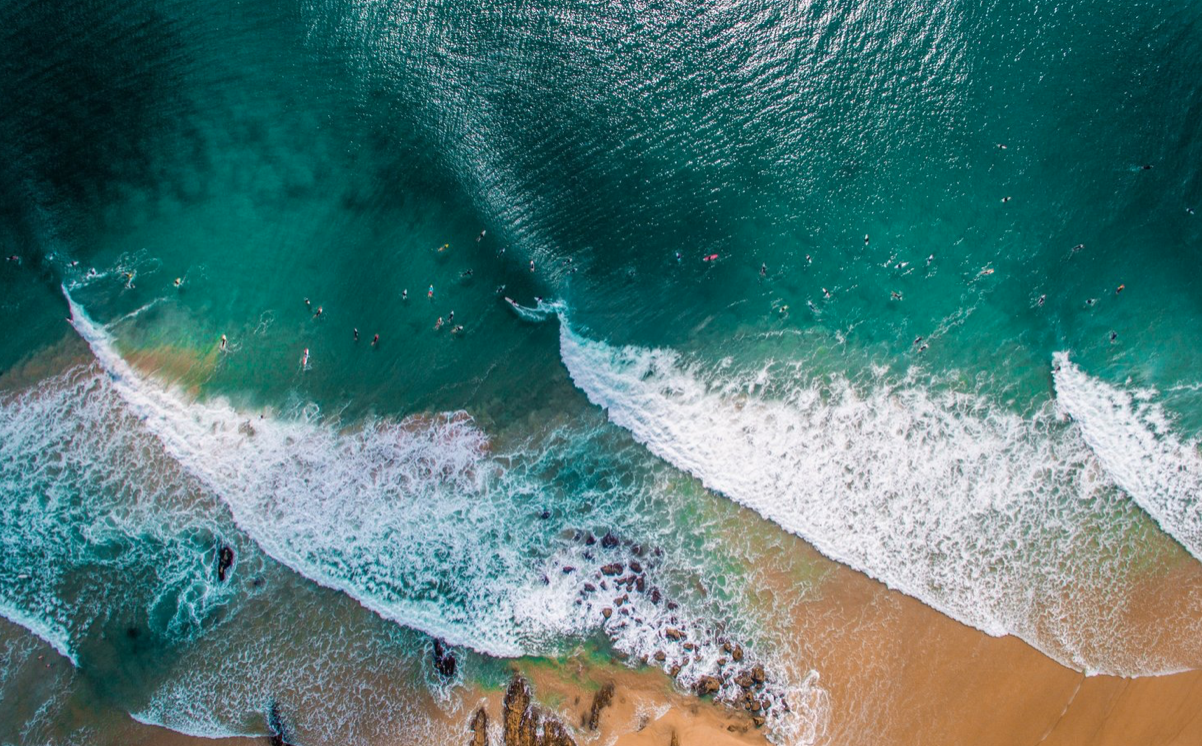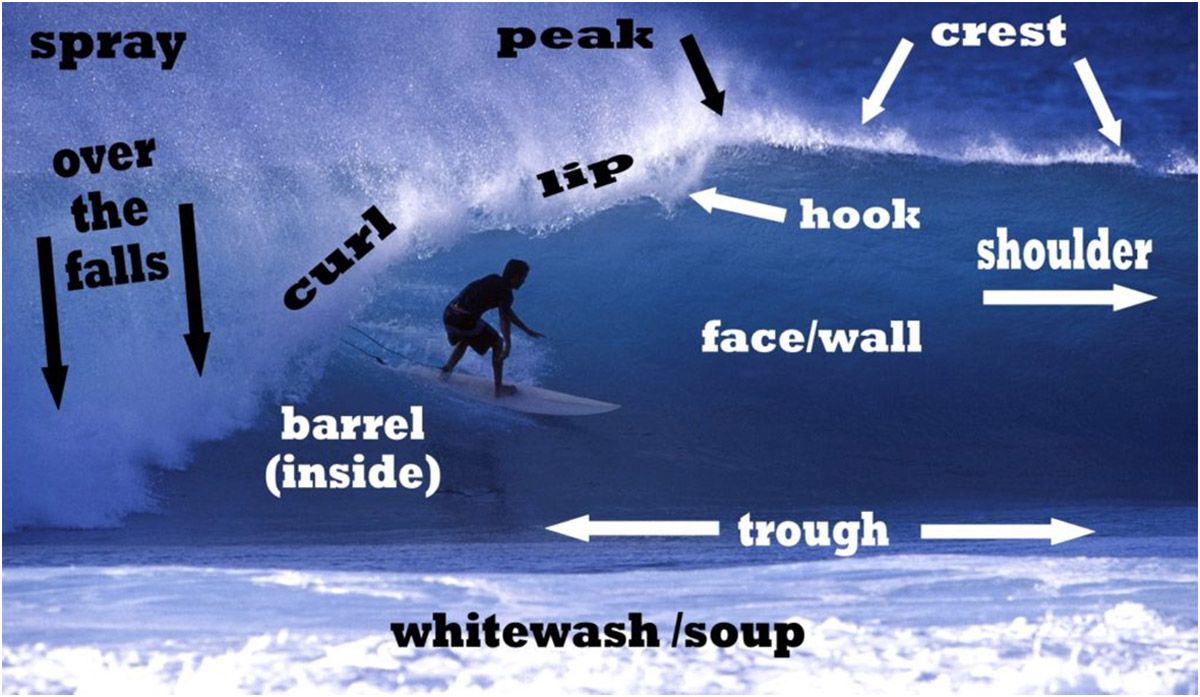
Whether you’re a surfer, ocean lover, or curious beachgoer, understanding the science behind waves deepens your connection to the sea—and keeps you safer in it. From the rolling swell at La Jolla Shores to the invisible underwater forces that shape our coastline, waves influence everything: surf culture, marine health, and even how our beaches evolve. Let’s break down how waves work, why they matter, and how Surf Education Academy (SEA) brings this science to life in every session.
How Are Ocean Waves Formed?
Most ocean waves are wind-generated. When the wind blows across the ocean’s surface, it transfers energy into the water. The size and strength of a wave depend on three key factors: wind speed, wind duration, and fetch (the distance over which the wind travels).
At La Jolla Shores, mellow summer winds generate soft, rolling waves—perfect for beginner surfers and longboarders looking for easy entry points and long rides. (These are the kinds of waves where you can hang five and still talk about what you had for breakfast.) South of The Cove, reef breaks pick up more powerful south swells during summer, delivering better shape and more push for intermediate and advanced surfers. (This is where the wave face starts to steepen, and your bottom turn needs to mean business.)
In contrast, winter brings powerful long-period swells. These are born from massive storms far out in the Pacific that churn up energy and send it traveling across the ocean. When that energy reaches our coastline, it transforms into clean, organized surf that can light up La Jolla’s breaks. (And trust us, nothing says “winter stoke” like a lined-up set rolling through Scripps.)
Understanding how swells are born and travel gives you a real sense of why surf conditions shift daily—and why surfers obsess over forecast charts like stock traders watching the Dow. (Internal Link: Surf Forecasting Blog)

Anatomy of a Wave
Each wave you ride—or get rolled by—has a structure. Here’s what you should know:
- Crest: The top of the wave. Surfers often call this the “lip,” where most of the wave’s power lives—especially when it’s pitching. (This is where the drop happens. If you’re not ready, it’ll pitch you into next week.)
- Trough: The lowest point between waves. Think of it as sea level—it’s what gives perspective on a wave’s actual size. (From the beach it might look chest-high, but from the trough, it’s a whole different beast.)
- Wavelength: The distance between two crests. Wind swells have short intervals and feel bumpy, like riding a jackhammer. Ground swells, with longer wavelength and time between waves, offer cleaner, stronger surf. More time = more power. (That 16-second period swell? Chef’s kiss.)
- Amplitude: The height of the wave from average water level. It’s the nerdy way to measure the “face” of a wave—what surfers size up when paddling in. (And what you hope is just big enough to get your heart pumping—but not your leash snapped.)
- Period: The time it takes two wave crests to pass a fixed point. Longer-period waves break with more punch and precision. (These are the waves that travel across oceans to greet you like a perfectly timed high-five from Poseidon.)
Knowing these elements helps you anticipate whether to paddle for it, duck dive, or stay put.
Why Waves Matter for Marine Ecosystems
Waves aren’t just energy for surfers—they’re critical to ocean life. They:
- Oxygenate the water, making it breathable for fish, plankton, and all those curious critters in La Jolla’s tidepools. (Fresh, oxygen-rich water = healthy coastline, which benefits everyone from sea slugs to sea lions.)
- Distribute nutrients, especially through kelp forests like the ones off La Jolla Cove. (Yes, even when kelp tangles your leash or finds its way into your wetsuit—it’s still essential.)
- Shape coastlines, forming tidepools, sandbars, and reefs that give homes to thousands of marine species. (When the seasons change, and the sandbars shift, surfers and stingrays alike benefit from the new real estate.)
Come Fall and early Winter, those shifting sands expose reefy bottoms, changing the game for surfers and marine life. The same reef that gives you a clean, peeling right also supports urchins, crabs, juvenile fish, and seaweed ecosystems.
Practical Surf Safety—Using Wave Knowledge
At SEA, we don’t just teach how to pop up—we help you read the ocean like a local.
- Spot wave sets and lulls
Pro tip: Use a surf watch or simply count between sets. Often, there’s a rhythm—sets arrive every few minutes. Learn the rhythm, and you’ll know when to paddle, when to chill, and when to send it. (This timing often separates the rookies from the rippers.) - Read rip currents and whitewater movement
If you don’t know where the rips are, ask a lifeguard. Don’t be shy—locals respect curiosity when it comes to safety. No lifeguard on duty? Watch where the regulars paddle out, where they come in, and where the foam flows. That tells you where the rip is and where the safe channels are. - Choose when to duck dive, turtle roll, or wait it out
We teach real-world techniques to avoid wipeouts and injuries—because there’s a time to paddle, a time to duck, and a time to chill and wait out the set. (Sometimes, letting that 10-foot cleanup wave roll by is the best decision of the session.) Wave science isn’t just for oceanographers—it’s for anyone who wants to ride smarter, safer, and with more confidence. Ready to learn hands-on?
Surf Education Academy: Science at the Heart of Surf Lessons
At SEA, ocean literacy is built into every program. Our coaches don’t just yell “Pop up!”—they explain why the tide’s doing what it’s doing, what the wind’s telling us, and why the break behaves the way it does.
We cover:
- Swell forecasting and tide charts specific to La Jolla, Torrey Pines, and Pacific Beach. (We teach you how to read those Magic Seaweed and Surfline charts like a pro.)
- Wave + wind awareness, including how direction, tide, and ocean floor (aka bathymetry) affect wave shape and rideability. (Because even the best surfer is at the mercy of the wrong tide and onshore wind.)
- Local ocean science, developed through real-world surfing, partnerships with local marine educators, and time in the water. (We bring the classroom to the lineup.)
Whether you’re in our kids’ camps or adult clinics, you’ll walk away with more than surf skills. You’ll gain an understanding of the ocean that’ll stick with you for life.
FAQs About Wave Science
Why are some days better for surfing in La Jolla?
It all depends on swell direction, period, and tide. A west or northwest swell with a long period (12–16 seconds) hitting during a medium tide can transform La Jolla Shores into a dreamy playground.
How do waves affect marine animals?
Waves stir up nutrients, oxygenate the water, and carve out habitats that countless marine species depend on—from the smallest snails to the sleekest sea lions.
Can anyone learn to understand waves?
Absolutely. With some guidance and regular exposure, reading the ocean becomes second nature. (And once it clicks, you’ll wonder how you ever stood on shore without noticing.)
Ready to Ride (and Learn)?
Explore more of the science behind surfing with us at Surf Education Academy. Whether you’re catching your first wave or fine-tuning your ocean awareness, our team is here to help you understand the waves—and love them even more.
🌊 Book a surf lesson today and ride smarter, safer, and more stoked.


 Rip Currents: Understanding, Spotting and Escaping Them
Rip Currents: Understanding, Spotting and Escaping Them